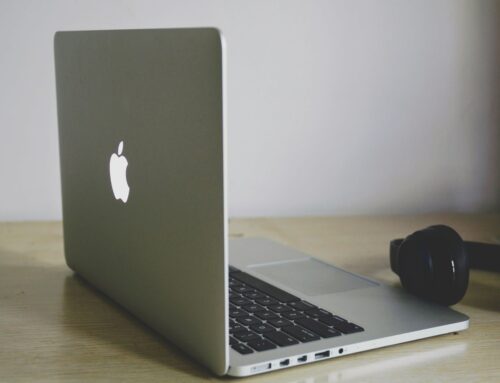An overheating desktop computer can cause a myriad of problems, from random shutdowns to permanent hardware damage. Overheating can significantly hinder performance and may ultimately lead to costly repairs. Understanding the causes of overheating and implementing quick fixes can help maintain the health and longevity of your desktop computer.
When a computer overheats, it typically signifies that the system is struggling to maintain a safe temperature. This can be due to a variety of factors, including poor ventilation, accumulation of dust and debris, degraded thermal paste, or inadequate cooling management. Each of these issues requires specific attention to ensure your computer functions efficiently.
In this article, we will explore practical and straightforward solutions to address an overheating desktop. By ensuring proper ventilation and airflow, cleaning dust and debris from components, checking and replacing thermal paste, and monitoring system temperatures and fan speeds, you can keep your computer running cool. Let’s delve into each of these solutions to understand how they can help prevent your desktop from overheating and ensure optimal performance.
Ensure Proper Ventilation and Airflow
Proper ventilation and airflow are crucial for preventing your desktop from overheating. When your computer’s internal components are starved of fresh air, they can’t dissipate heat effectively, leading to higher temperatures and potential malfunctions. Here’s how you can ensure optimal airflow:
1. Position Your Desktop Correctly: Ensure that your desktop is placed in a location with ample space around it. Avoid enclosing it in tight spaces like cabinets or placing it against walls, as this restricts airflow. Aim to keep at least a few inches of clearance on all sides.
2. Use Cooling Pads or Stands: Elevating your desktop slightly using a cooling pad or stand can enhance airflow underneath the device. These accessories often come with built-in fans that help to circulate air more effectively.
3. Organise Cables: Messy cables can obstruct airflow within your computer case. Use cable ties or clips to organise and route cables neatly. This not only improves airflow but also makes your system look tidier.
4. Keep Vents and Openings Unobstructed: Regularly check the vents and openings of your desktop to ensure they are not blocked by dust or objects. Free air passages allow your cooling fans to draw in fresh air and expel hot air efficiently.
By paying attention to ventilation and airflow, you can help your desktop maintain a cooler temperature, reducing the risk of overheating.
Clean Dust and Debris from Components
Dust and debris are common culprits behind overheating computers. Over time, these particles accumulate on components and obstruct airflow, causing your desktop to heat up. Cleaning your computer regularly can prevent these issues.
1. Power Down and Unplug: Before cleaning, always turn off your desktop and unplug it from the power source. This ensures safety and prevents damage to sensitive components.
2. Open the Case: Most desktop cases can be opened by removing a few screws or sliding a panel. Refer to your user manual if you’re unsure how to open it. Once open, you can access the internal components more easily.
3. Use Compressed Air: Compressed air is an effective tool for cleaning dust from components. Hold the can upright and use short bursts to blow dust off fans, heat sinks, and other parts. Avoid using a vacuum cleaner as it can generate static electricity.
4. Clean Fans and Heat Sinks: Pay special attention to the cooling fans and heat sinks as these areas tend to collect the most dust. If the fans are detachable, remove them and clean thoroughly. For stubborn dust, use a soft brush or cloth.
5. Reseal the Case: After cleaning, carefully reseal your desktop case, ensuring all parts are properly secured. Plug your desktop back in and power it on to check that everything functions correctly.
Regular cleaning can greatly enhance your computer’s performance and lifespan, preventing overheating issues caused by dust and debris accumulation.
Check and Replace Thermal Paste
Thermal paste plays a crucial role in maintaining your computer’s temperature by improving the heat transfer between the CPU and its heatsink. Over time, thermal paste can degrade, reducing its effectiveness and causing your desktop to overheat. Here’s how to check and replace it:
1. Power Down and Unplug: Just like with cleaning, make sure your desktop is completely powered off and unplugged before you begin. This ensures your safety and prevents any accidental damage.
2. Access the CPU Cooler: Open your computer case and locate the CPU cooler, which is usually a large fan and heatsink assembly. Carefully unmount it by releasing the clips or screws that hold it in place.
3. Remove Old Thermal Paste: Once the cooler is removed, you’ll see the old thermal paste on the CPU and the base of the heatsink. Use a cloth or paper towel with isopropyl alcohol to gently clean off the old paste. Make sure both surfaces are completely clean and dry before proceeding.
4. Apply New Thermal Paste: Apply a small pea-sized amount of new thermal paste directly to the centre of the CPU. Don’t overdo it; too much paste can be as ineffective as too little. When you reattach the heatsink, the paste will spread evenly.
5. Reassemble and Test: Reattach the CPU cooler securely, close the case, plug your desktop back in, and power it on. Monitor the temperatures to ensure they remain stable and within safe ranges.
Replacing the thermal paste can significantly improve heat dissipation and prevent your desktop from overheating.
Monitor and Manage System Temperatures and Fan Speeds
Proactively monitoring and managing your system’s temperatures and fan speeds is essential to prevent overheating. This allows you to catch potential problems early and make adjustments as needed.
1. Install Monitoring Software: Use software like HWMonitor, SpeedFan, or CoreTemp to keep an eye on your system’s temperatures and fan speeds. These tools provide real-time data and can alert you if temperatures exceed safe levels.
2. Check BIOS/UEFI Settings: Your computer’s BIOS or UEFI firmware often includes hardware monitoring features. Access these settings during startup (usually by pressing a key like F2 or Delete) and check the hardware monitor section. Make sure all fans are functioning and their speeds are within normal ranges.
3. Adjust Fan Speeds: Many monitoring tools allow you to manually adjust fan speeds. Increasing the speed of your fans can improve cooling but might also result in more noise. Find a balance that provides adequate cooling without being too loud.
4. Enable Alerts and Auto-Shutdowns: Some software tools offer options to set temperature alerts and automatic shutdowns if temperatures reach critical levels. Enabling these features can prevent severe overheating and potential damage.
5. Regular Maintenance: Regularly check for software updates that can improve how your monitoring tools function. Also, keep your fans and cooling systems clean to ensure they operate efficiently.
By actively monitoring your desktop’s thermal environment, you can take quick actions to manage heat and protect your hardware.
Conclusion
Dealing with an overheating desktop can be a major headache. However, with the right steps, you can effectively manage and fix the issue. Ensuring proper ventilation and airflow, regularly cleaning dust and debris, checking and replacing thermal paste, and actively monitoring system temperatures and fan speeds are all critical actions to keep your computer running cool and efficiently.
By following these simple yet effective methods, you can prevent potential damage to your hardware and enjoy a more stable and reliable computing experience. Taking a proactive approach to managing your desktop’s thermal environment not only extends the life of your components but also enhances overall performance.
If you’re experiencing persistent overheating issues that you can’t resolve, it’s time to seek professional help. At Forest City Computer Repairs, we offer expert desktop computer repair services, among others. Reach out to us today for a reliable solution to your desktop overheating problems.







